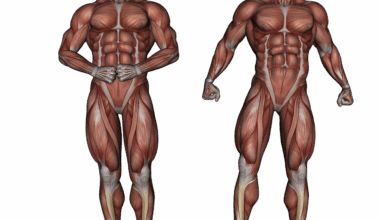Effective Recovery Techniques After Intense Indoor Volleyball Training
Recovery is a crucial part of any intense indoor volleyball training session. The body undergoes significant strain during matches and practices. Therefore, incorporating effective recovery techniques is vital for maintaining performance and preventing injuries. One simple technique is cool down exercises. These exercises help gradually lower the heart rate and stretch muscles, reducing stiffness. It’s also essential to hydrate properly after training. Water, along with electrolyte drinks, replenishes lost fluids. Nutrition plays a key role in recovery; a balanced meal rich in proteins and carbohydrates aids muscle repair. Consider including foods like lean meats, whole grains, and leafy greens in your post-training meals. Sleep is another vital component; aiming for 7-9 hours allows the body to recover optimally. Foam rolling is frequently used to alleviate muscle soreness and tightness, improving circulation. Moreover, consider passive recovery methods like taking warm baths or using contrast showers to soothe sore muscles. Lastly, mindfulness techniques, such as yoga or meditation, can enhance mental recovery, promoting overall well-being. Choose a combination of these strategies, ensuring you leave no stone unturned in your recovery routine!
Benefits of Hydration and Nutrition
Proper hydration and nutrition are fundamental to effective recovery after rigorous volleyball training. Continuous physical exertion leads to substantial fluid loss through sweat. Rehydrating after a game boosts energy levels and reduces the risk of dehydration-related issues. Body fluids should ideally be restored with water and electrolyte-rich drinks. Electrolytes help regulate muscle function and nerve signals. This balance is essential in preventing cramps and fatigue. Alongside hydration, nutrition plays an equally important role. Consuming a post-training meal should ideally occur within 30 minutes. This meal should feature both carbohydrates and proteins. Carbohydrates replenish glycogen stores, while proteins facilitate muscle repair. Options like a protein smoothie with fruits or a chicken quinoa salad can be nutritious choices. Incorporating antioxidants from fruits and vegetables into your diet aids in reducing inflammation. Foods rich in omega-3 fatty acids, including salmon and walnuts, are beneficial. Additionally, consider consulting a nutritionist for personalized dietary advice, tailored specifically to your training regimen. They can help ensure that your dietary choices optimize both your recovery and your performance during upcoming matches.
Stretching techniques are a critical aspect of post-training recovery especially following intense indoor volleyball sessions. It aids in relieving tension and enhancing flexibility. Dynamic stretches performed before training prepare the muscles while static stretches post-training are crucial in promoting elongation. Aim for at least 10-15 minutes of thorough stretch sessions. Focus on major muscle groups engaged during training, including legs, arms, and back. For instance, consider hamstring stretches, shoulder stretches, and quad stretches which effectively relieve muscle tightness. Breathing deeply during these stretches aids relaxation and promotes a calming effect on the body after exertion. Additionally, integrating yoga into your recovery routine can yield immense benefits, both physically and mentally. Yoga exercises enhance flexibility and are fabulous for stress relief. Engaging in deep breathing techniques during yoga sessions fosters mind-body awareness, creating a holistic recovery approach. Alternating between static stretching and yoga can maximize muscle recovery efficiency. Moreover, using resources like instructional videos or joining a class can provide guidance on practicing correctly. Staying consistent with your stretching routine will contribute positively to achieving long-term benefits in your volleyball performance.
Utilizing active recovery techniques after volleyball training sessions is incredibly advantageous for improved performance. Active recovery involves low-intensity exercises that maintain blood flow without putting strain on the muscles. Activities such as walking, cycling, or engaging in light swimming can encourage recovery by enhancing circulation. This improved blood flow facilitates nutrient delivery to fatigued muscles, promoting quicker recovery. Moreover, incorporating rest days into your training schedule will give your muscles adequate time to repair. Consider implementing one to two active recovery days weekly, allowing for reduced intensity activities. Engaging with teammates can enhance motivation through social engagement during these activities. Another highly effective active recovery method is mobility work, focusing on joint range of motion and flexibility. Mobility work enhances athletic performance and can prevent injuries associated with volleyball training. Experiment with various active recovery sessions, finding what aligns best with your routine. Additionally, consider using music or peer motivation to keep these sessions enjoyable and engaging. Combine it with traditional recovery methods for a more comprehensive approach. Embracing a variety of active recovery techniques will lead you to feel invigorated and ready for your next training session.
Implementing adequate sleep is crucial for recovery following high-intensity indoor volleyball training. Sleep plays a vital role in muscle recovery and overall well-being. Ensuring you obtain sufficient rest allows your body to repair tissues stressed during exercise. During deep sleep, growth hormones are released, fostering muscle repair and growth. Aim for 7-9 hours of quality sleep nightly to optimize recovery. Establishing a consistent sleep schedule—going to bed and waking up at the same times each day—contributes to enhancing your sleep quality. Creating a comfortable sleep environment is equally important. Consider dimming lights, reducing noise, and maintaining a cool room temperature to create an ideal atmosphere. Limit caffeine intake and electronic device usage before bed as they can disrupt sleep patterns. Incorporating a pre-sleep routine like gentle stretching or reading can signal your body it’s time to wind down. Monitor efficiency by waking up feeling refreshed and revived over time. Good sleep hygiene habits directly correlate with enhances performance on the volleyball court. Approach sleep not just as a necessary daily activity but as an essential component of your training cycle for optimal recovery.
Mindfulness techniques offer significant benefits for recovery in indoor volleyball training. Techniques such as yoga, meditation, and breathing exercises have gained popularity among athletes for aiding in both mental and physical recovery. By practicing mindfulness regularly, players can reduce stress and anxiety. This promotes greater focus during training and matches. Consider incorporating short meditation sessions into your post-training routine. Even 5 to 10 minutes can create a shift in focus, relieving mental strain. Yoga blends physical movement with mental relaxation, enhancing flexibility while promoting calmness. Furthermore, deep breathing exercises help center the mind, preparing it to tackle upcoming challenges. Engaging with a mindfulness coach or attending workshops can introduce valuable techniques and enhance your practice. Exploring online resources, such as apps or YouTube channels dedicated to mindfulness, can also aid in establishing a routine. Consistency is key; allowing these practices to become a part of your training is essential for long-term effects. Athletes who mindfully recover often display improved resilience and better handle competitive pressure. Integrating mindfulness techniques into your recovery routine can transform your approach to both training and competition in volleyball.
In conclusion, ensuring effective recovery after indoor volleyball training is critical for optimal performance. Strategies such as proper hydration, nutrition, stretching, and sleep all play important roles in aiding recovery and ensuring longevity in the sport. Implementing a mix of both active and passive recovery strategies can significantly improve your overall athletic capacity. Understand that each player’s recovery needs may differ based on their unique body responses, training intensity, and skill levels. Take the time to experiment with various techniques and personalize your routine to suit your specific needs. Prioritizing recovery is not merely an afterthought; it is an essential part of any athlete’s journey in volleyball. Be sure to listen to your body, providing it the care it requires. Recovery allows your body and mind to recharge, ensuring that you perform at your highest level. Embrace it as an opportunity rather than a limitation. As you integrate these techniques into your routine, you will see positive changes in your performance on the court, leading to a fulfilling volleyball experience.
In essence, effective recovery strategies are vital ingredients for athletes and coaches striving for success in indoor volleyball training. This can significantly enhance performance and minimize injury risks in the long run.


